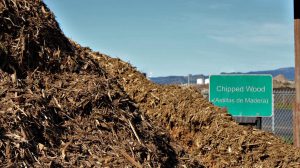Forget diamonds — Napa Valley’s farmers are chasing after a different kind of carbon-based rock. Biochar, a form of charcoal, has been used for thousands of years as a soil amendment in the Amazon basin, and now, vintners are advocating for its use here in California.
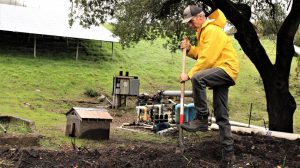
Fred Seavey turning compost pile
Fred Seavey turning compost pile
Fred Seavey of Seavey Vineyard turns one of his compost piles by hand with a shovel.
photo: Sam Jones, Register
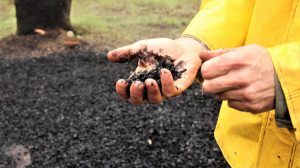
Seavey Vineyard compost - grapes
Seavey Vineyard uses manure, grape skins, oak leaves, biochar and more in its compost.
photo: Sam Jones, Register
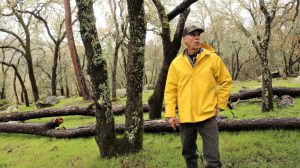
Fred Seavey in forest
Seavey Vineyard has 40 planted acres, but many more in forests.
photo: Sam Jones, Register

Biochar at Seavey Vineyard
By burning wood in the absence of oxygen, Seavey Vineyard is able to produce biochar for its compost.
photo: Sam Jones, Register
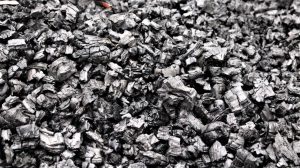
Biochar close up, Seavey Vineyard
After burning dead vines and wood from the forested acreage, Seavey Vineyard is able to produce biochar.
photo: Sam Jones, Register
Biochar gives Napa Valley farmers way to dispose of woody waste, boost soil health
Farming certification group Napa Green is a proponent of the process of making biochar because it is a lower-risk way to burn unwanted wood.
“Biochar is not a scientific term, so it can be interpreted a few different ways, but it is a way to describe fine-grained charcoal made from a specific biomass product,” said Ben Mackie, climate and soil specialist for Napa Green. “The biomass can be anything in this situation — there’s communities that use anything from spent fuel or residues from crops or even manure to create this product — but in general, when we’re talking about it in this sense, it’s usually from wood, and it’s a very stable carbon.”
Here in Napa Valley, biochar is often made with vines pulled from area vineyards, but it’s also a way to get rid of woody materials from forested areas considered to be fire risks. There are multiple ways to make biochar, ranging from low to high tech, but each requires the material to be heated up with minimal oxygen in order to sequester the carbon into little black chunks.
Once the biochar has been made, farmers add it to compost and spread it in their fields for maximum effect. Working as a sort of soil enhancer, research has shown that adding biochar can reduce nitrogen leaching, increase water retention and encourage beneficial soil microbes.
“That’s why people are really buying into it,” said Mackie. “Because it increases the resilience of your soil and therefore your agro ecosystem … It’s like a coral reef for [soil] nutrients.”
In addition to water retention, Mackie also says that biochar can help make water bioavailable — or releasable — to the thirsty root system.
“We’re emphasizing this these days because it’s really important. It’s February and we’re wondering if it’s going to rain again,” Mackie explained. “When thinking about resilience and the amount of irrigation on hand, those with biochar in their surroundings are gonna feel a larger buffer there.”
While the biochar process sounds simple, logistically it is difficult for property owners to produce and process enough biochar from their waste alone. Mackie said there aren’t many local options in Napa County, so interested customers often have to outsource the process. For instance, Pacific Biochar in Sonoma sells a suite of biochar and compost blends for those who would rather buy than build.
However, for those who have tested the waters and want to produce biochar more extensively on their properties, the Napa County Resource Conservation District (RCD) offers assistance.
“We’ve put workshops together in the past where we hire somebody to come and train farmers how to make biochar,” said Miguel Garcia, who serves as sustainable agriculture program manager for Napa County RCD. “There’s definitely professionals that do it at a greater scale, and obviously they keep everything under control, but most recently there’s been a movement to develop technology so that your typical day-to-day people [on site] can produce that material as well.”
Seavey Vineyards in St. Helena learned about the process from Napa County RCD and now produces its own biochar, which it mixes with compost they make onsite from goat and sheep manure, grape skins, and downed leaves.
“Napa RCD taught us how to do the burns in a way that produces the biochar so we can recycle it into our compost and into our soil,” said Fred Seavey. “[Miguel] came out and did a demonstration for us for our removed diseased vines … So now we have expanded that to the stuff we are doing here in the forest.”
Garcia says that while it economically makes sense for farmers to buy their biochar commercially, having more accessible technologies in the county could have a long-term positive impact on the valley.
“One product that came out in recent times they call an air curtain burner, which essentially looks like a shipping container, but it is retrofitted with a way to burn the material under low oxygen, and we actually have vineyard company here in Napa that purchased that, and they have been making their own biochar,” he said.
This company is Piña Vineyard Management, which uses its air curtain burner as a more eco-friendly way to dispose of leftover woody material from their client’s properties.
Davie Piña, general manager of the vineyard management company, said he has transformed his air burner into a mobile unit that can be transported to wherever their clients may be. While the amount of wood and vines to be burned depends seasonally, the company does have the means to produce a decent amount of biochar.
“We can burn about three to four acres of grapevine material every day,” said Piña. “You need to have a skid-steer and a water truck, so it isn’t cheap to make.”
On the municipal level, Napa Recycling and Waste Services is also trying to get ahead of the ball by adding an onsite biochar facility, noting logistical reasons for the need to include these services.
“We don’t do it yet, we just make compost, but we have our plans for wood which would make our electricity and the biochar,” said Tim Dewey-Mattia, recycling, and public education manager for NRWS.
“Because we don’t have much space or time, our compost processes in 60 to 90 days, so the wood is always sent to the Central Valley to biomass electricity plants, which are basically these electricity plants that burn wood originally from forestry and agriculture,” Dewey-Mattia explained. “The problem that is happening is that in the last decade, those plants have started to get too old and expensive to run, and they have started to go offline.”
According to Yale researchers in 2020, California had a total of 70 functioning biomass power plant facilities in the early ’90s, but the number has since plummeted to 24. Similarly, the California Biomass Energy Alliance states that these generators only account for about 6 percent of the state’s renewable sources, as compared to its height at 15 percent.
Thus, NRWS and Dewey-Mattia are having a hard time finding a facility to send their material to, and when they can, they have to shell out a pretty penny.
“So that is kind of why we are deciding we want to do it onsite,” he said.
While still very much in the planning stages, NRWS is optimistically hoping to have their very own biomass generator within the next five years or so.
While all biochar advocates are seeking greater access to the technologies required to produce the material in large quantities, the main goal, for now, is to spread awareness and continue research into the topic.
“There’s still a lot of active research happening, but everything that I have read sounds promising, so we are cautiously optimistic that things are going in that direction,” said Garcia.
Making the commitment to third party certification takes time and effort, but it is worth it to demonstrate our commitment to the community and to protect our watershed, our land and the air we breathe.
- Susan Boswell, Chateau Boswell Winery

